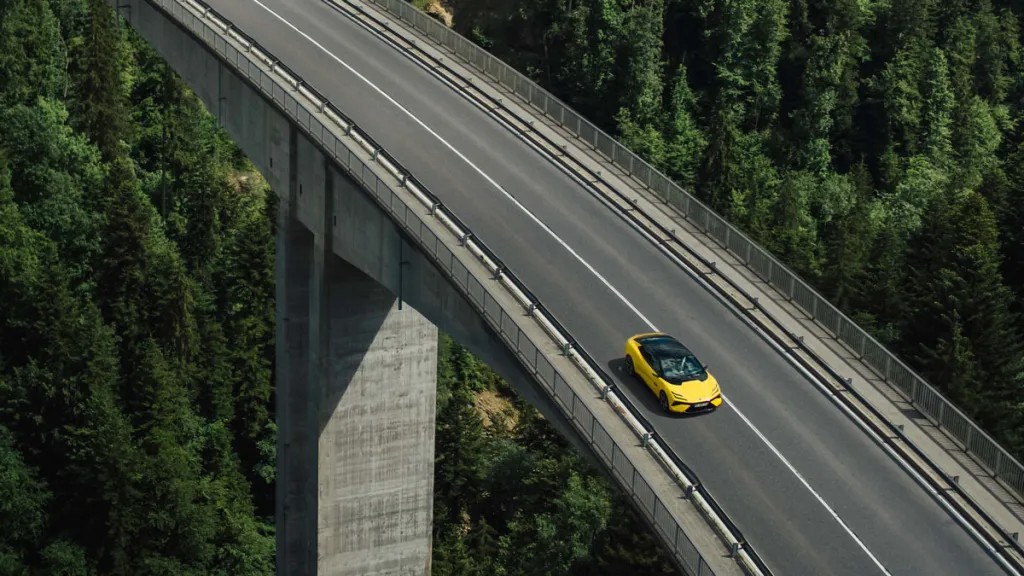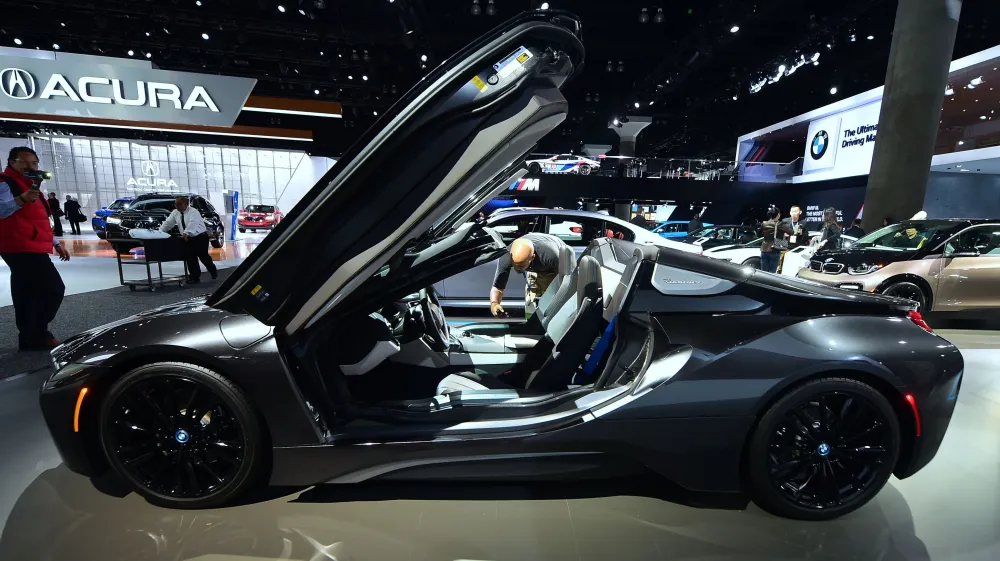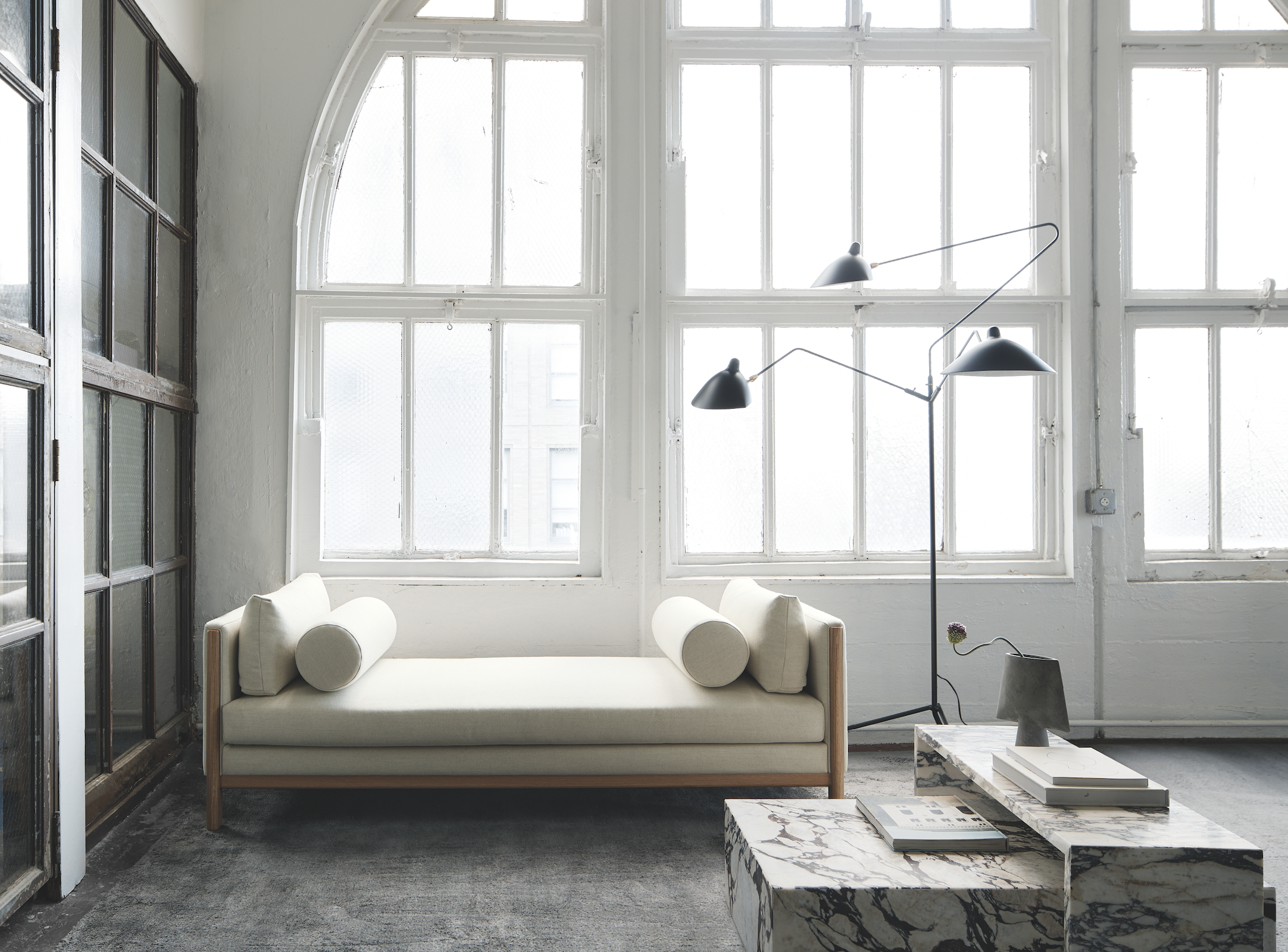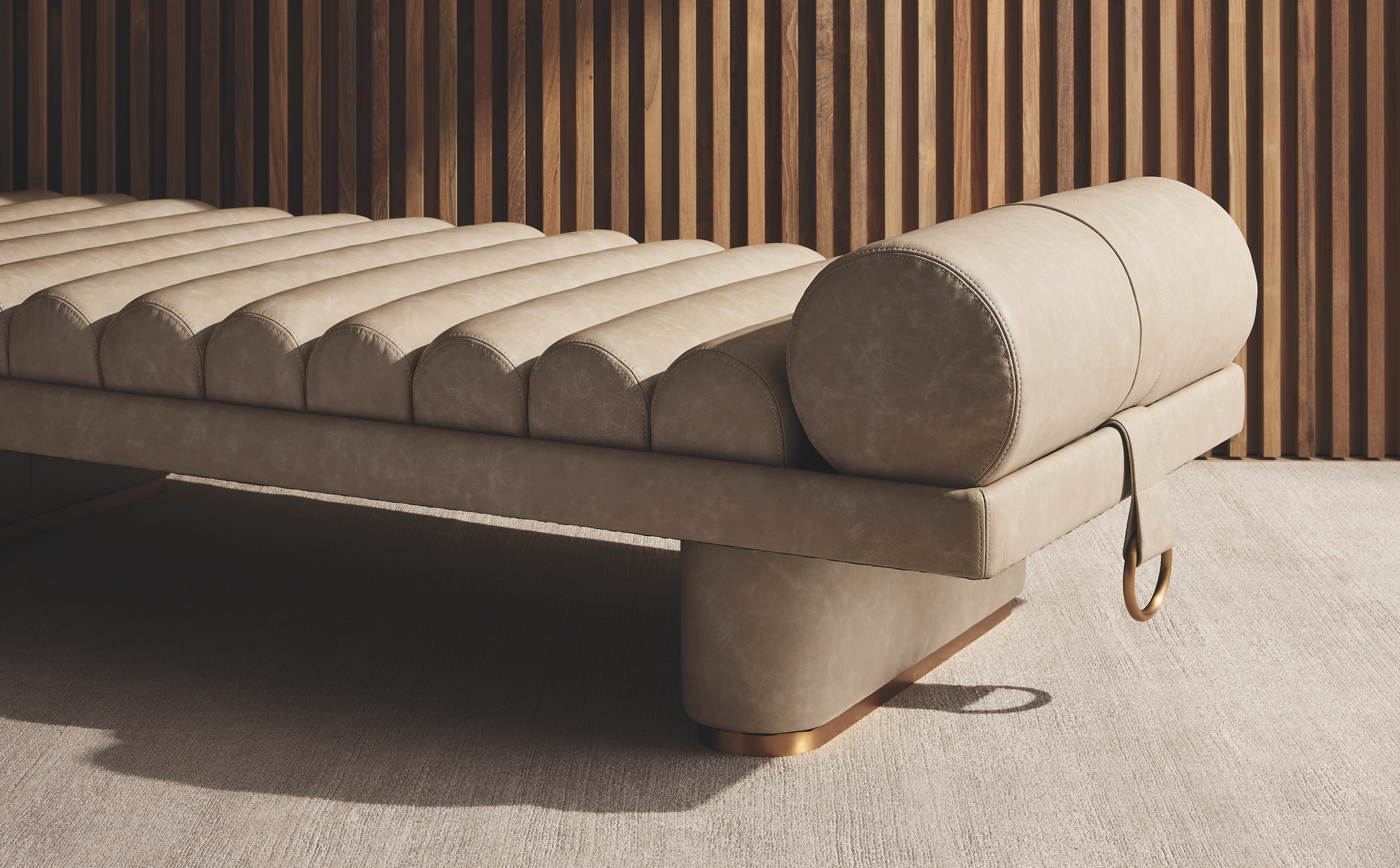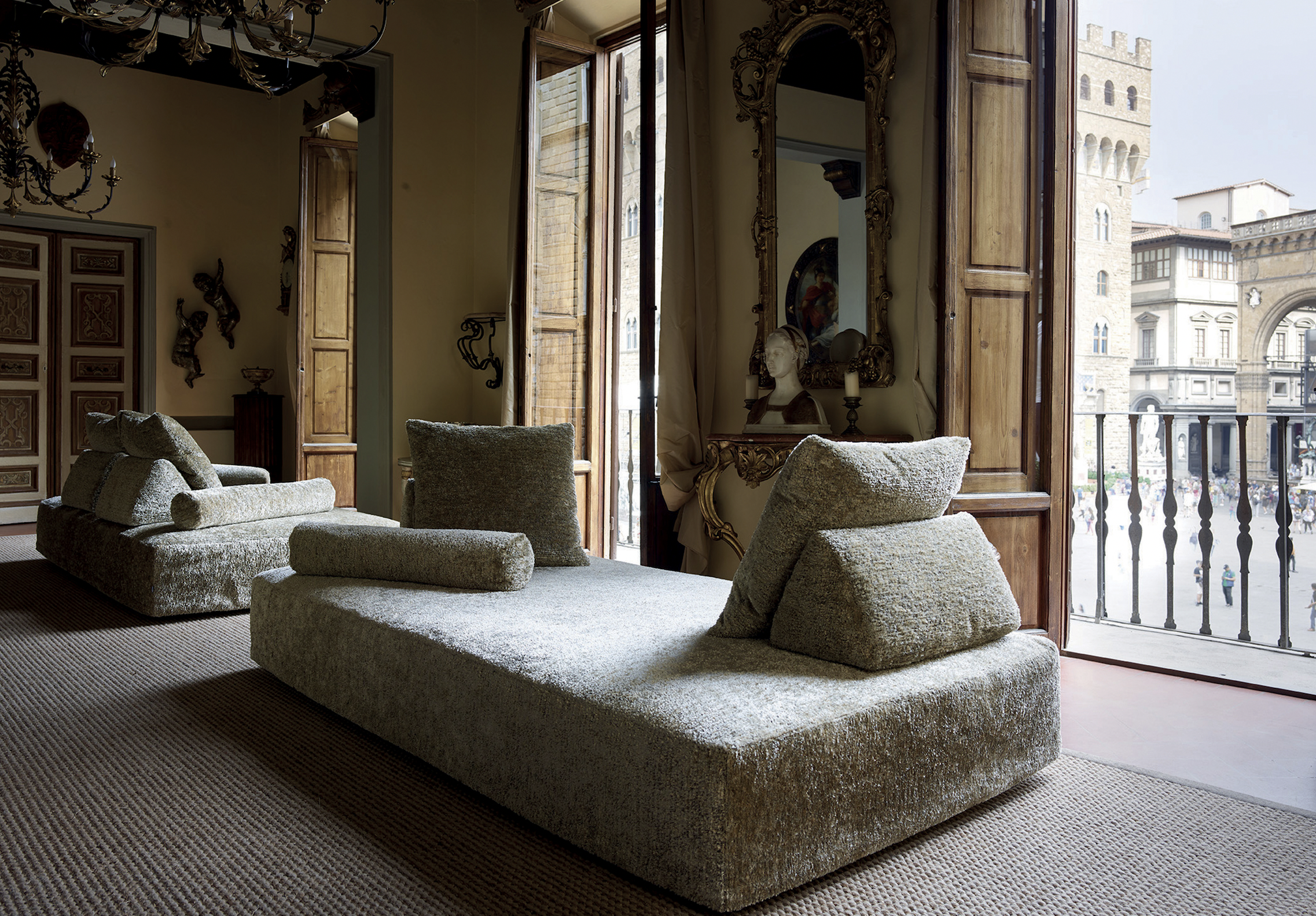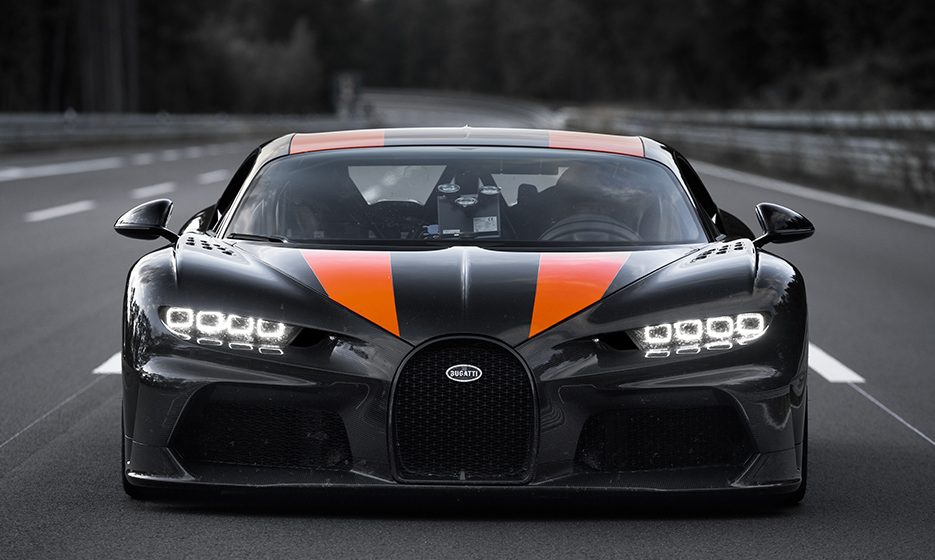
22 Facts You Didn’t Know About Bugatti
These details elevate the French supercar marque.
Related articles
We all know the elemental facts about hypercar maker Bugatti. It doesn’t sell anything for less than two commas. It’s built one of the only cars to ever officially break the 300 mph barrier—although it was a slightly modified, “near-production” Chiron that achieved that feat—along with one of the most expensive new vehicles of all time, the La Voiture Noire. Its Type 57 SC Atlantic Coupe is arguably the most beautiful car ever built and, with a mere three left in existence, demonstrably one of the most expensive at approx. $56 million a piece. With the brand on the verge of a new era after merging with Croatian EV maker Rimac this past summer, what better time to see just how much you really know about Bugatti.
Bugatti built trains during the 1930s, including one that was the world’s fastest.
The Bugatti name may be mainly associated with hypercars in 2022 but it has graced other products over the years, including aeroplane motors and, more recently, pool tables. The company also spent time during the 1930s working on trains, or, as it liked to call them, autorails. These vehicles may have never gone into wide use, but they were still impressive, setting multiple speed records between 1933 and 1936.

Bugatti’s first Autorail prototype in 1931 Bugatti
The Bugatti factory has narrowly avoided burning down—twice.
Founded by Ettore Bugatti in Molsheim, France, Bugatti has been pushing the boundaries of physics and engine capabilities in pursuit of speed since 1909. In 1939, one of its early engines started a sizable fire due to a testing explosion. Reportedly, the surrounding area was in peril of being engulfed as well. In 2001, when testing the first Veyron engine, that 1,200hp mill allegedly generated enough heat that the factory building was in danger of being scorched.
Bugatti has won the 24 Hours of Le Mans twice.
We all know that Bugatti likes to show off on the test track, but it also used to do the same on the race track. Although the brand hasn’t competed in any major competitions for quite some time, it used to. In fact, Bugatti was a force in racing during the ’20s to ’30s. A privately entered Bugatti won the very first Monaco Grand Prix in 1929, but the marque’s greatest triumphs came at the 24 Hours of Le Mans, where cars driven by Jean-Pierre Wimille were victorious in 1937 (along with co-driver Robert Benoise) and 1939 (Pierre Veyron—more on him in a bit).
Bugatti briefly produced a saloon called the EB 112 in the mid-’90s.
Since being brought back from the dead by Italian businessman Romano Artioli in the late ’80s, almost all of Bugatti’s effort and resources have gone toward the development of boundary-pushing hypercars. We say almost, though, because the brand actually briefly produced a saloon called the EB 112 before it was purchased by Volkswagen Auto Group in 1998. Why is the sedan all but forgotten at this point, you may ask? Because the brand only ever built three examples of the vehicle. On the rare occasion one of those hits the market, you can expect it to sell for in excess of $1.6 million.

Bugatti EB 112 prototype Schaltkulisse
The Veyron was a giant pipe dream that nearly didn’t come to fruition.
When Volkswagen’s Ferdinand Piech (grandson of famed Ferdinand Porsche) bought Bugatti back in the late 1990s, he had already been dreaming of a 1,000 hp super machine. His engineers had previously told him this would not be possible. Along came the Bugatti platform and his vision was realized several years later when the Veyron officially launched in 2005.
The Veyron requires 10 radiators to keep its quad-turbocharged W-16 engine functioning.
Three radiators handle the engine, while another trio tackles the air-to-liquid intercoolers, a separate unit for the air conditioning, another specifically modulates the engine oil, and yet another cools the transmission oil. One final radiator is dedicated to the differential oil. Each radiator takes 15 hours to construct, meaning the whole shebang takes nearly four weeks to complete the requisite 150 hours of labour.
A 400km/h (full speed) run in the Veyron would only last 15 minutes and would cost more than $59,000.
Technically, you’d only make it 12 minutes, because the 120-litre fuel tank would be empty at that point. However, even if you had enough road—the Veyron can do 407km/h, meaning it covers 6.7 kilometres a minute. You would need 81.4km of road to keep your foot buried for 12 minutes. But the Veyron’s tyres wouldn’t last. They’re only good enough for running at 400km/h for about 15 minutes. After that, Bugatti would need to swap them for a new set, which reportedly will set you back a whopping $59,000.

Bugatti Veyron EB 16.4 Photo: Courtesy of Bugatti
Bugatti lost a heap of money making the Veyron, reportedly about $8.4 million per unit.
The total cost to produce the Veyron’s 450 examples amounted to about $2.28 billion, the bulk of which was research and development. Even selling some special versions of the Veyron for as much as $4.2 million per car couldn’t help recoup those ginormous losses.
“Veyron” was a real, pedigreed race driver.
It’s not just a cool-sounding name drummed up by marketers around a whiteboard. Pierre Veyron was a champion race driver between 1933 and 1953, notching plenty of victories, including several for Bugatti (most notably the 1939 24 Hours of Le Mans where he piloted the Type 57S with Jean-Pierre Wimille). Veyron became a test driver for Bugatti in 1932.
The 500-unit Chiron production run sold out in just five years.
The hypercar, by definition, is exclusive. This is especially true of Bugattis, though. In fact, the brand has only built two series production models, the Veyron and Chiron, since it was acquired by Volkswagen AG in 1998, both of which were produced in very limited numbers. Only 450 Veyrons were built during the 10 years it was in production. Amazingly, the Chiron sold through its entire production run, which will include 50 more examples than its predecessor, in half that time.

Bugatti’s “near-production” Chiron that broke 480km/h Bugatti
Michelin had to make special tyres for the Chiron’s 489.2km/h speed run.
The most restricting—and dangerous—element of a top speed trial is the tire the car is running. For the Chiron’s 489km/h sprint, Michelin took its Sport Cup 2 shoes and wove stronger metallic threads into the rubber. Exhaustive testing at speeds of up to 510km/h was conducted long before the shoes were fitted to the Chiron, and each tyre was x-rayed after to find any imperfections.
The Chiron could’ve gone faster if it was tested at a higher elevation.
The modded Chiron’s 489km/h speed isn’t the car’s ceiling. It was actually still gaining speed when test pilot Andy Wallace had to back off the throttle to enter an upcoming turn safely. The run was purposefully completed at Volkswagen Group’s Ehra-Lessien test track in Germany because it’s relatively near sea level. Had the Chiron run in Nevada, where Koenigsegg chose to set a 447km/h record in its Agera RS, the lower air pressure and density due to the higher elevation mean the Chiron would’ve been 24km/h faster—at least according to reps for Bugatti.
There are 3,460,250 kilometres miles of carbon fibre inside one Chiron.
Bugatti claims that if all the carbon-fibre elements of a single Chiron were disassembled down to individual strands and connected end-to-end, it would total 3,460,250 km. For reference, that’s about nine times the distance from the Earth to the moon (384,472 km) or enough to wrap around the Earth 86 times.

Bugatti Chiron Pur Sport Photo: Courtesy of Bugatti.
The surface area of the Chiron’s catalytic converters totals about 25 New York City blocks.
Catalytic converters are required on all vehicles to snag dangerous particulates from the exhaust system. Your daily driver likely employs one, so naturally, the Chiron uses six. If you add up all the surface area of the honeycomb catalyst material in the half-dozen units, you’d have about 230,265 sqm.
The Chiron’s high-tech air conditioning system can cool an entire apartment.
Bugattis are designed to go fast. Really fast. Because of this, the engineers at Molsheim have had to rethink how you build a car. Just look at the cooling system in the Chiron. It doesn’t just have to stop the vehicle’s massive W16 engine from overheating, it also needs to ensure the driver is comfortable as they hurtle towards 480km/h. To do this, the company had to come up with a system that reaches the desired cabin temperature quickly, maintains it and operates as quietly as possible. It takes a powerful A/C to do this, specifically one powerful enough to cool a space measuring 80sqm, or about the size of a Sydney one-bedroom.
The Chiron uses 3-D-printed brakes.
How do you stop a 1100kW, 2000kg Chiron when it’s cooking along at 420km an hour? Phenomenal brakes. Those eight-piston titanium monobloc brake callipers are the first callipers to be produced on a 3-D printer. Not only are they lighter by 40 per cent than traditional aluminium brakes, but they’re also the largest and most powerful brake calliper fitted to a production car.

Bugatti La Voiture Noire Photo by Keno Zache, courtesy of Bugatti Automobiles S.A.S.
Jean Bugatti’s influence extends all the way to the one-of-a-kind La Voiture Noire.
Ettore Bugatti’s son Jean may have passed away more than 80 years ago, but his continued influence can be seen in the one-off La Voiture Noire. That’s because the $26.2 million hypercar is based on one of the most important Bugattis of all time, the fabled Type 57 SC Atlantic, which was designed and driven by Jean in the ‘30s. While the identity of La Voiture Noire’s owner remains one of the marque’s most intriguing mysteries, the oldest may be what happened to the car its based on: That Type 57 SC Atlantic, chassis No. 57453, vanished shortly after the start of World War II and hasn’t been seen since.
The new Centodieci is a modern interpretation of the iconic EB 110.
The EB 110 emerged in 1991 and set the automotive world ablaze. It’s the only series-production Bugatti built in Italy and set four world records, including the fastest acceleration, the fastest series-production sports car, the fastest sports car running on gas, and the fastest series-production car on ice. Bugatti decided to pay homage to that (brief) period when its factory was in Italy, and so the Centodieci (Italian for “110”) emerged in 2019. Unlike traditional modern Bugattis that feature a teardrop design, with an overall swooping line that starts higher in the front and tapers down in the rear, the 1193KW Centodieci—built on the Chiron platform—retains the original wedge shape of the EB 110: low in the front, higher in the rear.

Bugatti Centodieci Photo: Courtesy of Bugatti.
The Centodieci’s taillight took six months to design and build.
Engineers claim that the beautifully detailed and intricate taillight on the Centodieci was the single longest portion of the design and development process, requiring about a half a year. The challenge was creating a three-dimensional effect that was functional and striking.
Bugatti will put diamonds in the speedometer.
If your multi-million dollar Bugatti isn’t expensive nor rare enough, the factory will gladly allow you to check a box to insert one-carat diamonds in the speedometer. If you’re wondering why you’ve never seen a blinged-out Bugatti speedo, we are, too. It’s impossible to find a photo of one online and Bugatti remains mum as to how many customers have actually selected this option. All Chirons come standard with diamonds, though they’re somewhat hidden. Each of the four tweeters in the car’s Accuton sound system features a one-carat diamond membrane in order to offer optimum aural fidelity.
It took two years to complete the paint job on the Divo “Lady Bug.”
You can’t accuse Bugatti of cutting corners. The brand fully commits itself to every single part of the design, development and manufacturing process. Just look at the paint job on the Divo “Lady Bug.” The marque’s designers spent two years coming up with an intricate diamond pattern for the car’s exterior to ensure it looks just like its insect namesake. The process was so time consuming that at one point the team almost gave up. Fortunately, they kept at it, and the resulting car is nothing if not standout, even among the other 39 Divos.

Bugatti Divo “Lady Bug” Ted7/Bugatti
Design experts have deemed the Bolide the most beautiful hypercar in the world.
Bugatti doesn’t just make several of the fastest production vehicles of all time, it can also claim one of the best looking—officially. Last fall, a panel of leading automobile designers named the track-only Bolide the most beautiful hypercar in the world at the 36th Festival Automobile International in Paris. “The Bolide was an entirely different challenge for our design team, and a kind of mental experiment where we stripped the car back to its W16 quad-turbocharged heart and rebuild it with the bare minimum to create the most extreme Bugatti yet,” design director Achim Anscheidt said in statement following the event. “The key for us was to respect the technical requirements of Bolide, focusing first on the function and only then developing the form.

A production prototype of the Bugatti Bolide Photo by Drew Phillips, courtesy of Rolex.
Subscribe to the Newsletter
Recommended for you
First Drive: The Lotus Emeya Targets Porsche, Mercedes, and Lucid With Its 70 kw Performance
What the all-electric sedan lacks in cohesive styling is more than made up for in muscular athleticism.
By Tim Pitt
July 22, 2024
Why BMW’s First Electric Cars Are Future Classics
Many things still feel contemporary about the BMW i3 and i8.
July 11, 2024
You may also like.
By Josh Bozin
24/07/2024
You may also like.
5 Lounge Chairs That Add Chic Seating to Your Space
Daybeds, the most relaxed of seating solutions, offer a surprising amount of utility.
Chaise longue, daybed, recamier, duchesse brisée—elongated furniture designed for relaxing has a roster of fancy names. While the French royal court of Louis XIV brought such pieces to prominence in fashionable European homes, the general idea has been around far longer: The Egyptian pharaohs were big fans, while daybeds from China’s Ming dynasty spurred all those Hollywood Regency fretwork pieces that still populate Palm Beach living rooms. Even Mies van der Rohe, one of design’s modernist icons, got into the lounge game with his Barcelona couch, a study of line and form that holds up today.
But don’t get caught up in who invented them, or what to call them. Instead, consider their versatility: Backless models are ideal in front of large expanses of glass (imagine lazing on one with an ocean view) or at the foot of a bed, while more structured pieces can transform any corner into a cozy reading nook. Daybeds may be inextricably linked to relaxation, but from a design perspective, they put in serious work.

Emmy, Egg Collective
In designing the Emmy chaise, the Egg Collective trio of Stephanie Beamer, Crystal Ellis and Hillary Petrie, who met as students at Washington University in St. Louis, aimed for versatility. Indeed, the tailored chaise looks equally at home in a glass skyscraper as it does in a turn-of-the-century town house. Combining the elegance of a smooth, solid oak or walnut frame with the comfort of bolsters and cushioned upholstery or leather, it works just as well against a wall or at the heart of a room. From around $7,015; Eggcollective.com
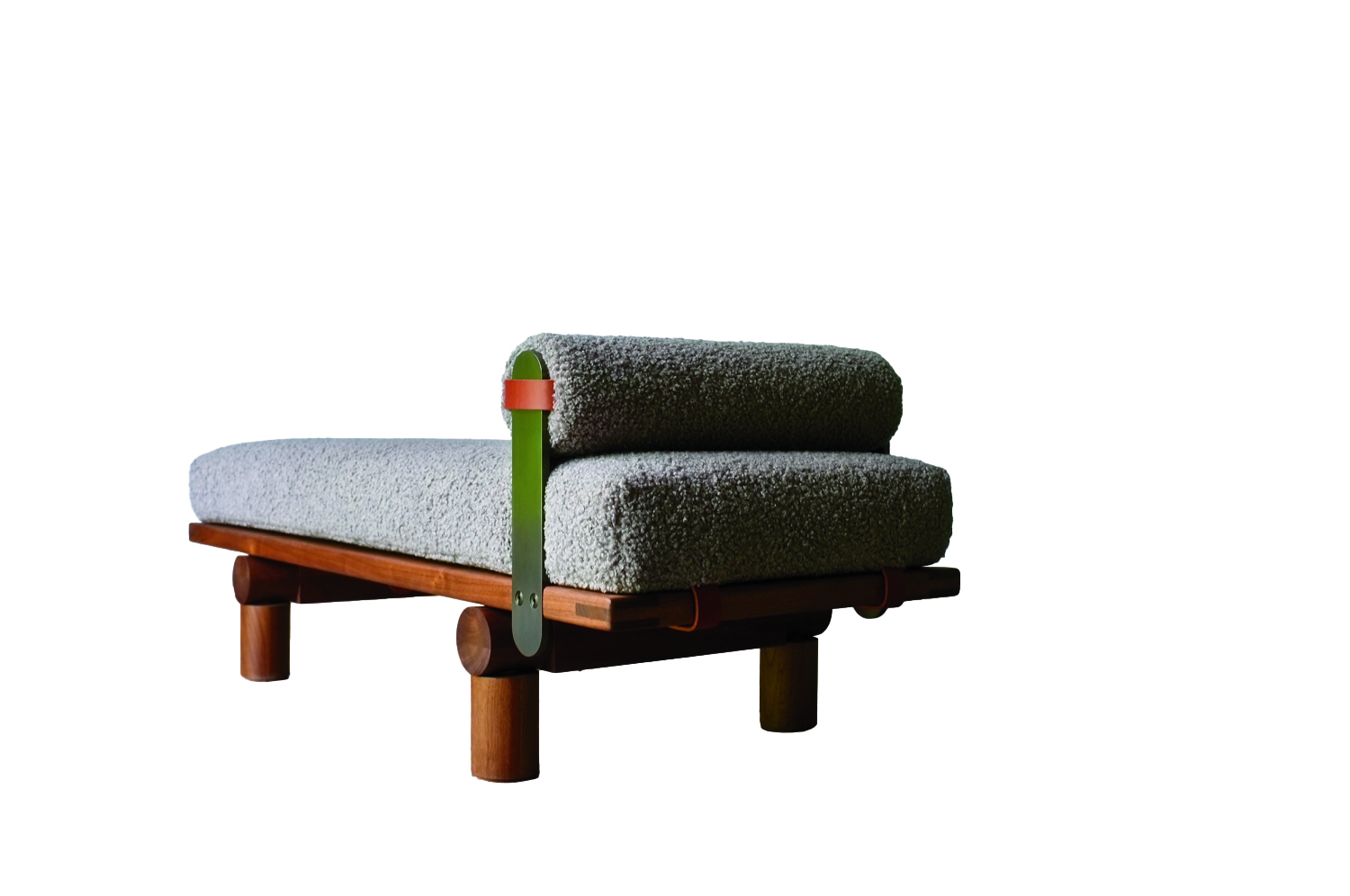 Plum, Michael Robbins
Plum, Michael Robbins
Woodworker Michael Robbins is the quintessential artisan from New York State’s Hudson Valley in that both his materials and methods pay homage to the area. In fact, he describes his style as “honest, playful, elegant and reflective of the aesthetic of the Hudson Valley surroundings”. Robbins crafts his furniture by hand but allows the wood he uses to help guide the look of a piece. (The studio offers eight standard finishes.) The Plum daybed, brought to life at Robbins’s workshop, exhibits his signature modern rusticity injected with a hint of whimsy thanks to the simplicity of its geometric forms. Around $4,275; MichaelRobbins.com
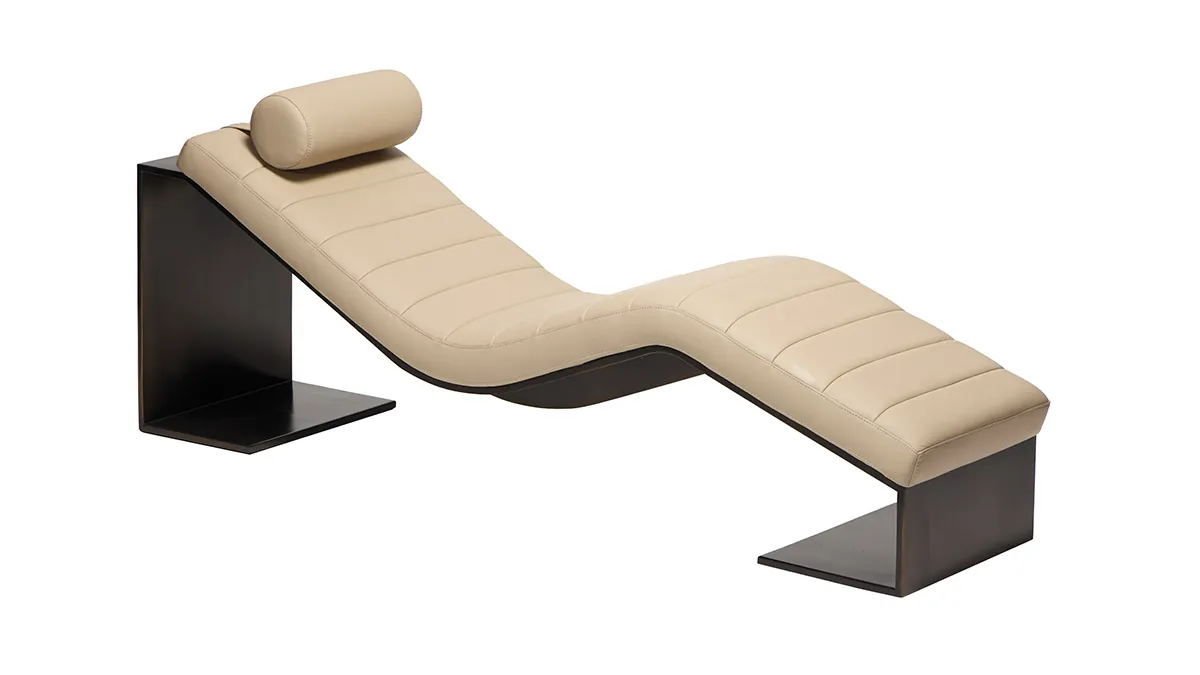
Kimani, Reda Amalou Design
French architect and designer Reda Amalou acknowledges the challenge of creating standout seating given the number of iconic 20th-century examples already in existence. Still, he persists—and prevails. The Kimani, a bent slash of a daybed in a limited edition of eight pieces, makes a forceful statement. Its leather cushion features a rolled headrest and rhythmic channel stitching reminiscent of that found on the seats of ’70s cars; visually, these elements anchor the slender silhouette atop a patinated bronze base with a sure-handed single line. The result: a seamless contour for the body. Around $33,530; RedaAmalou
Dune, Workshop/APD
From a firm known for crafting subtle but luxurious architecture and interiors, Workshop/APD’s debut furniture collection is on point. Among its offerings is the leather-wrapped Dune daybed. With classical and Art Deco influences, its cylindrical bolsters are a tactile celebration, and the peek of the curved satin-brass base makes for a sensual surprise. Associate principal Andrew Kline notes that the daybed adeptly bridges two seating areas in a roomy living space or can sit, bench-style, at the foot of a bed. From $13,040; Workshop/ APD
Sherazade, Edra
Designed by Francesco Binfaré, this sculptural, minimalist daybed—inspired by the rugs used by Eastern civilizations—allows for complete relaxation. Strength combined with comfort is the name of the game here. The Sherazade’s structure is made from light but sturdy honeycomb wood, while next-gen Gellyfoam and synthetic wadding aid repose. True to Edra’s amorphous design codes, it can switch configurations depending on the user’s mood or needs; for example, the accompanying extra pillows—one rectangular and one cylinder shaped— interchange to become armrests or backrests. From $32,900; Edra
You may also like.
By Josh Bozin
24/07/2024
22/07/2024
Watches & Wonders 2024 Showcase: Hermès
We head to Geneva for the Watches & Wonders exhibition; a week-long horological blockbuster featuring the hottest new drops, and no shortage of hype.
With Watches & Wonders 2024 well and truly behind us, we review some of the novelties Hermès presented at this year’s event.
—
HERMÈS

Moving away from the block colours and sporty aesthetic that has defined Hermès watches in recent years, the biggest news from the French luxury goods company at Watches & Wonders came with the unveiling of its newest collection, the Hermès Cut.
It flaunts a round bezel, but the case middle is nearer to a tonneau shape—a relatively simple design that, despite attracting flak from some watch aficionados, works. While marketed as a “women’s watch”, the Cut has universal appeal thanks to its elegant package and proportions. It moves away from the Maison’s penchant for a style-first product; it’s a watch that tells the time, not a fashion accessory with the ability to tell the time.
Hermès gets the proportions just right thanks to a satin-brushed and polished 36 mm case, PVD-treated Arabic numerals, and clean-cut edges that further accentuate its character. One of the key design elements is the positioning of the crown, boldly sitting at half-past one and embellished with a lacquered or engraved “H”, clearly stamping its originality. The watch is powered by a Hermès Manufacture movement H1912, revealed through its sapphire crystal caseback. In addition to its seamlessly integrated and easy-wearing metal bracelet, the Cut also comes with the option for a range of coloured rubber straps. Together with its clever interchangeable system, it’s a cinch to swap out its look.
It will be interesting to see how the Hermès Cut fares in coming months, particularly as it tries to establish its own identity separate from the more aggressive, but widely popular, Ho8 collection. Either way, the company is now a serious part of the dialogue around the concept of time.
—
Read more about this year’s Watches & Wonders exhibition at robbreport.com.au
You may also like.
22/07/2024
Living La Vida Lagerfeld
The world remembers him for fashion. But as a new tome reveals, the iconoclastic designer is defined as much by extravagant, often fantastical, homes as he is clothes.
“Lives, like novels, are made up of chapters”, the world-renowned bibliophile, Karl Lagerfeld, once observed.
Were a psychological-style novel ever to be written about Karl Lagerfeld’s life, it would no doubt give less narrative weight to the story of his reinvigoration of staid fashion houses like Chloe, Fendi and Chanel than to the underpinning leitmotif of the designer’s constant reinvention of himself.
In a lifetime spanning two centuries, Lagerfeld made and dropped an ever-changing parade of close friends, muses, collaborators and ambiguous lovers, as easily as he changed his clothes, his furniture… even his body. Each chapter of this book would be set against the backdrop of one of his series of apartments, houses and villas, whose often wildly divergent but always ultra-luxurious décor reflected the ever-evolving personas of this compulsively public but ultimately enigmatic man.
With the publication of Karl Lagerfeld: A Life in Houses these wildly disparate but always exquisite interiors are presented for the first time together as a chronological body of work. The book indeed serves as a kind of visual novel, documenting the domestic dreamscapes in which the iconic designer played out his many lives, while also making a strong case that Lagerfeld’s impact on contemporary interior design is just as important, if not more so, than his influence on fashion.

In fact, when the first Lagerfeld interior was featured in a 1968 spread for L’OEil magazine, the editorial describes him merely as a “stylist”. The photographs of the apartment in an 18th-century mansion on rue de Université, show walls lined with plum-coloured rice paper, or lacquered deepest chocolate brown in sharp contrast to crisp, white low ceilings that accentuated the horizontality that was fashionable among the extremely fashionable at the time. Yet amid this setting of aggressively au courant modernism, the anachronistic pops of Art Nouveau and Art Deco objects foreshadow the young Karl’s innate gift for creating strikingly original environments whose harmony is achieved through the deft interplay of contrasting styles and contexts.
Lagerfeld learned early on that presenting himself in a succession of gem-like domestic settings was good for crafting his image. But Lagerfeld’s houses not only provided him with publicity, they also gave him an excuse to indulge in his greatest passion. Shopping!
By 1973, Lagerfeld was living in a new apartment at Place Saint–Sulpice where his acquisition of important Art Deco treasures continued unabated. Now a bearded and muscular disco dandy, he could most often be found in the louche company of the models, starlets and assorted hedonistic beauties that gathered around the flamboyant fashion illustrator Antonio Lopez. Lagerfeld was also in the throes of a hopeless love affair with Jacques de Bascher whose favours he reluctantly shared with his nemesis Yves Saint Laurent.

He painted the rooms milky white and lined them with specially commissioned carpets—the tawny patterned striations of which invoked musky wild animal pelts. These lent a stark relief to the sleek, machine-age chrome lines of his Deco furnishings. To contemporary eyes it remains a strikingly original arrangement that subtly conveys the tensions at play in Lagerfeld’s own life: the cocaine fuelled orgies of his lover and friends, hosted in the pristine home of a man who claimed that “a bed is for one person”.
In 1975, a painful falling out with his beloved Jacques, who was descending into the abyss of addiction, saw almost his entire collection of peerless Art Deco furniture, paintings and objects put under the auctioneer’s hammer. This was the first of many auction sales, as he habitually shed the contents of his houses along with whatever incarnation of himself had lived there. Lagerfeld was dispassionate about parting with these precious goods. “It’s collecting that’s fun, not owning,” he said. And the reality for a collector on such a Renaissance scale, is that to continue buying, Lagerfeld had to sell.
Of all his residences, it was the 1977 purchase of Hôtel Pozzo di Borgo, a grand and beautifully preserved 18th-century house, that would finally allow him to fulfill his childhood fantasies of life in the court of Madame de Pompadour. And it was in this aura of Rococó splendour that the fashion designer began to affect, along with his tailored three-piece suits, a courtier’s ponytailed and powdered coif and a coquettish antique fan: marking the beginning of his transformation into a living, breathing global brand that even those with little interest in fashion would immediately recognise.
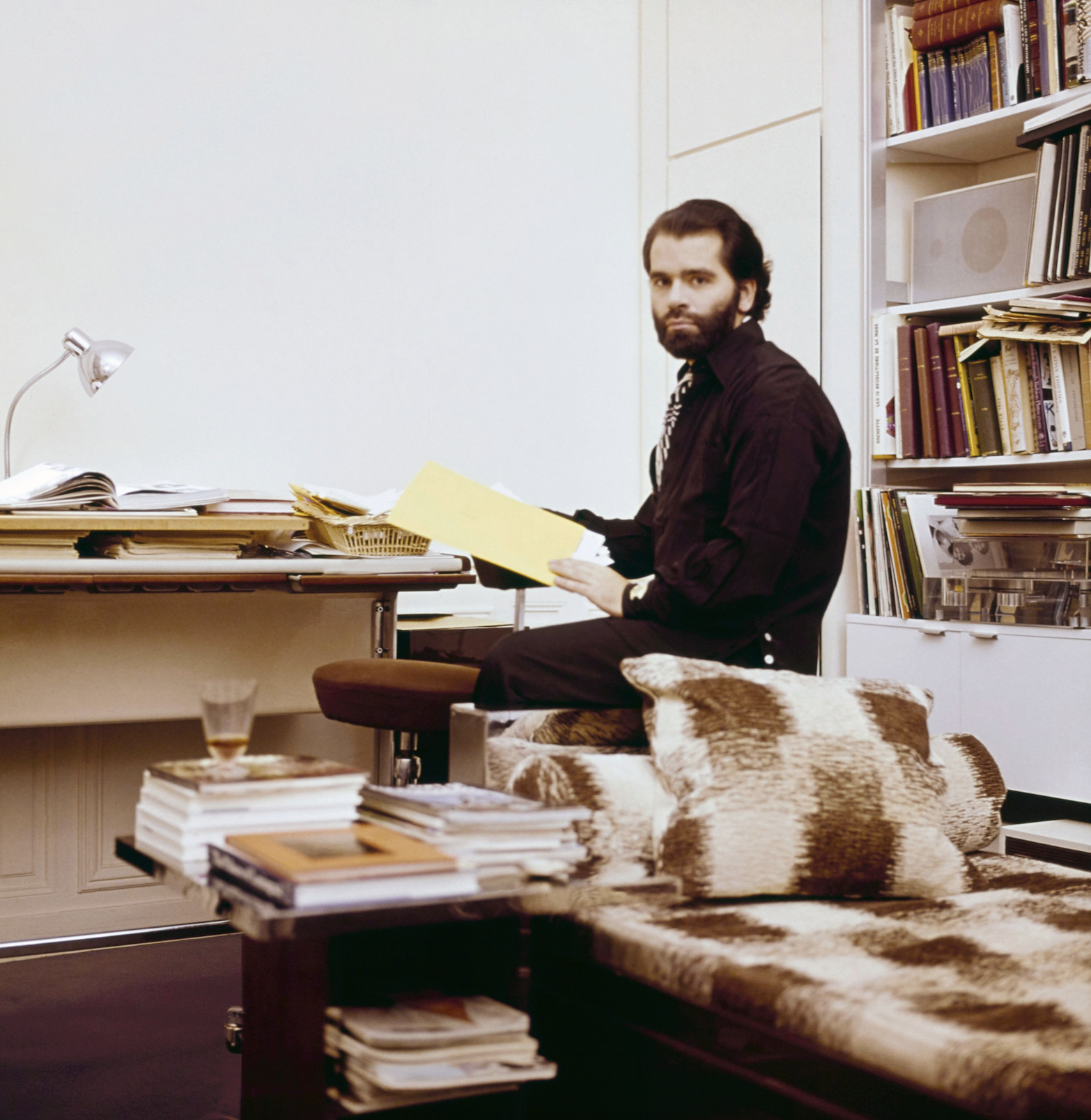
Lagerfeld’s increasing fame and financial success allowed him to indulge in an unprecedented spending frenzy, competing with deep-pocketed institutions like the Louvre to acquire the finest, most pedigreed pearls of the era—voluptuously carved and gilded bergères; ormolu chests; and fleshy, pastel-tinged Fragonard idylls—to adorn his urban palace. His one-time friend André Leon Talley described him in a contemporary article as suffering from “Versailles complex”.
However, in mid-1981, and in response to the election of left-wing president, François Mitterrand, Lagerfeld, with the assistance of his close friend Princess Caroline, became a resident of the tax haven of Monaco. He purchased two apartments on the 21st floor of Le Roccabella, a luxury residential block designed by Gio Ponti. One, in which he kept Jacques de Bascher, with whom he was now reconciled, was decorated in the strict, monochromatic Viennese Secessionist style that had long underpinned his aesthetic vocabulary; the other space, though, was something else entirely, cementing his notoriety as an iconoclastic tastemaker.
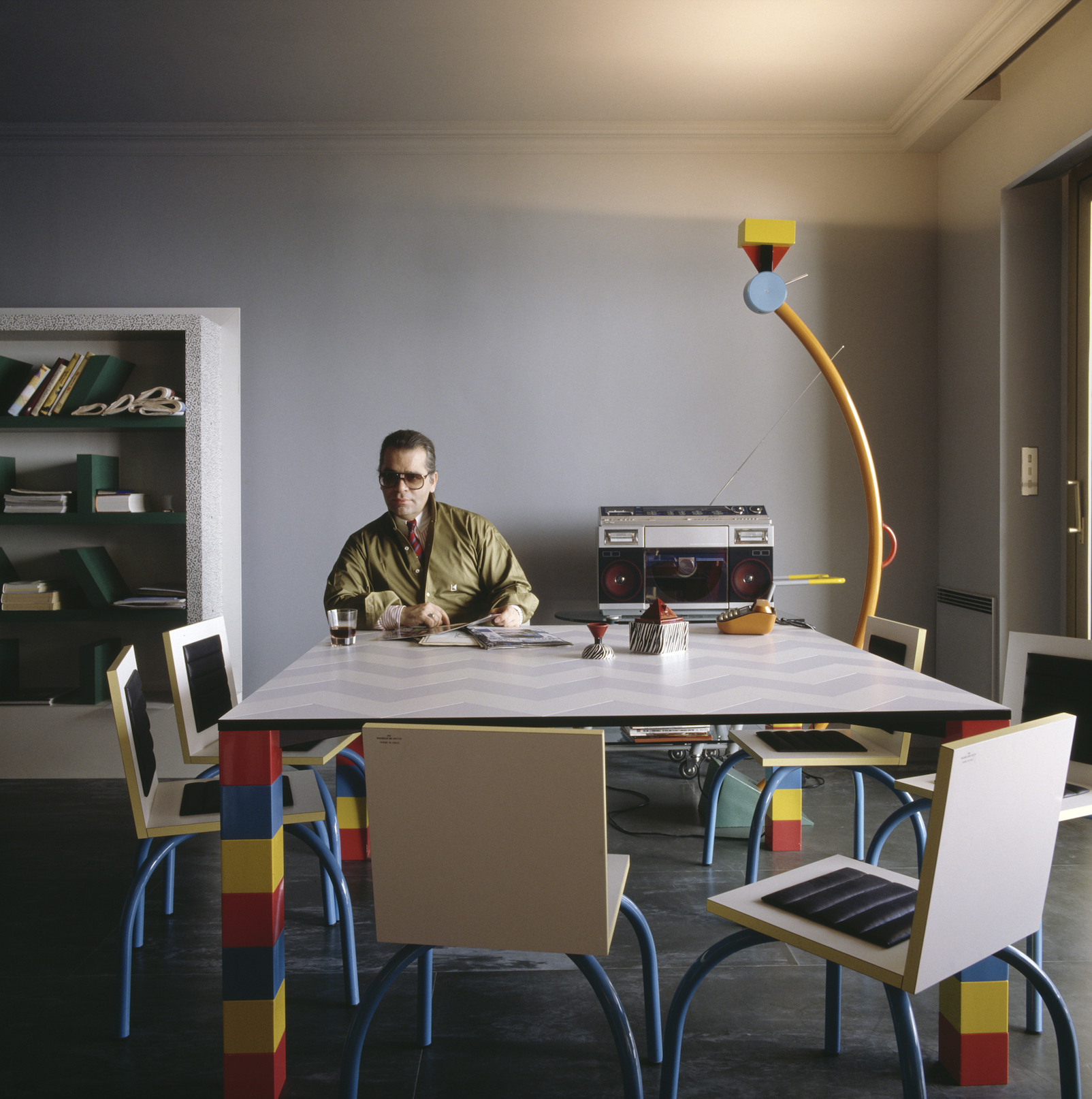
Lagerfeld had recently discovered the radically quirky designs of the Memphis Group led by Ettore Sottsass, and bought the collective’s entire first collection and had it shipped to Monaco. In a space with no right angles, these chaotically colourful, geometrically askew pieces—centred on Masanori Umeda’s famous boxing ring—gave visitors the disorientating sensation of having entered a corporeal comic strip. By 1991, the novelty of this jarring postmodern playhouse had inevitably worn thin and once again he sent it all to auction, later telling a journalist that “after a few years it was like living in an old Courrèges. Ha!”

In 1989, de Bascher died of an AIDS-related illness, and while Lagerfeld’s career continued to flourish, emotionally the famously stoic designer was struggling. In 2000, a somewhat corpulent Lagerfeld officially ended his “let them eat cake” years at the Hôtel Pozzo di Borgo, selling its sumptuous antique fittings in a massive headline auction that stretched over three days. As always there were other houses, but now with his longtime companion dead, and his celebrity metastasising making him a target for the paparazzi, he began to look less for exhibition spaces and more for private sanctuaries where he could pursue his endless, often lonely, work.
His next significant house was Villa Jako, named for his lost companion and built in the 1920s in a nouveau riche area of Hamburg close to where he grew up. Lagerfeld shot the advertising campaign for Lagerfeld Jako there—a fragrance created in memorial to de Bascher. The house featured a collection of mainly Scandinavian antiques, marking the aesthetic cusp between Art Nouveau and Art Deco. One of its rooms Lagerfeld decorated based on his remembrances of his childhood nursery. Here, he locked himself away to work—tellingly—on a series of illustrations for the fairy tale, The Emperor’s New Clothes. Villa Jako was a house of deep nostalgia and mourning.
But there were more acts—and more houses—to come in Lagerfeld’s life yet. In November 2000, upon seeing the attenuated tailoring of Hedi Slimane, then head of menswear at Christian Dior, the 135 kg Lagerfeld embarked on a strict dietary regime. Over the next 13 months, he melted into a shadow of his former self. It is this incarnation of Lagerfeld—high white starched collars; Slimane’s skintight suits, and fingerless leather gloves revealing hands bedecked with heavy silver rings—that is immediately recognisable some five years after his death.
The 200-year-old apartment in Quái Voltaire, Paris, was purchased in 2006, and after years of slumber Lagerfeld—a newly awakened Hip Van Winkle—was ready to remake it into his last modernist masterpiece. He designed a unique daylight simulation system that meant the monochromatic space was completely without shadows—and without memory. The walls were frosted and smoked glass, the floors concrete and silicone; and any hint of texture was banned with only shiny, sleek pieces by Marc Newson, Martin Szekely and the Bouroullec Brothers permitted. Few guests were allowed into this monastic environment where Lagerfeld worked, drank endless cans of Diet Coke and communed with Choupette, his beloved Birman cat, and parts of his collection of 300,000 books—one of the largest private collections in the world.
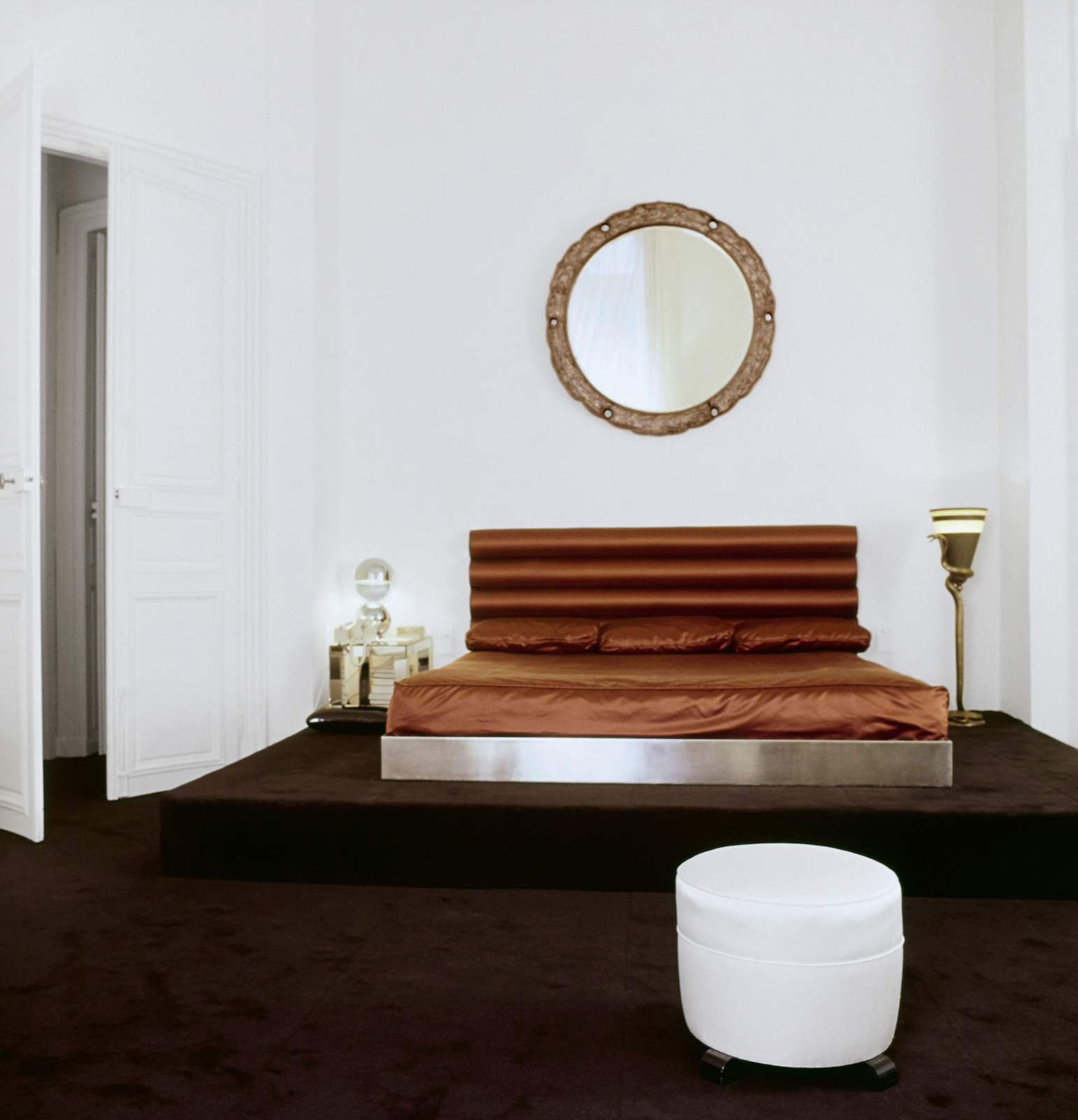
Lagerfeld died in 2019, and the process of dispersing his worldly goods is still ongoing. The Quái Voltaire apartment was sold this year for US$10.8 million (around $16.3 million). Now only the rue de Saint-Peres property remains within the Lagerfeld trust. Purchased after Quái Voltaire to further accommodate more of his books—35,000 were displayed in his studio alone, always stacked horizontally so he could read the titles without straining his neck—and as a place for food preparation as he loathed his primary living space having any trace of cooking smells. Today, the rue de Saint-Peres residence is open to the public as an arts performance space and most fittingly, a library.
You may also like.
By Josh Bozin
24/07/2024
Watch This Space: Mike Nouveau
Meet the game-changing horological influencers blazing a trail across social media—and doing things their own way.
In the thriving world of luxury watches, few people own a space that offers unfiltered digital amplification. And that’s precisely what makes the likes of Brynn Wallner, Teddy Baldassarre, Mike Nouveau and Justin Hast so compelling.
These thought-provoking digital crusaders are now paving the way for the story of watches to be told, and shown, in a new light. Speaking to thousands of followers on the daily—mainly via TikTok, Instagram and YouTube—these progressive commentators represent the new guard of watch pundits. And they’re swaying the opinions, and dollars, of the up-and-coming generations who now represent the target consumer of this booming sector.
—
MIKE NOUVEAU

Can we please see what’s on the wrist? That’s the question that catapulted Mike Nouveau into watch stardom, thanks to his penchant for highlighting incredibly rare timepieces across his TikTok account of more than 400,000 followers. When viewing Nouveau’s attention-grabbing video clips—usually shot in a New York City neighbourhood—it’s not uncommon to find him wrist-rolling some of the world’s rarest timepieces, like the million-dollar Cartier Cheich (a clip he posted in May).
But how did someone without any previous watch experience come to amass such a cult following, and in the process gain access to some of the world’s most coveted timepieces? Nouveau admits had been a collector for many years, but moved didn’t move into horology full-time until 2020, when he swapped his DJing career for one as a vintage watch specialist.
“I probably researched for a year before I even bought my first watch,” says Nouveau, alluding to his Rolex GMT Master “Pepsi” ref. 1675 from 1967, a lionised timepiece in the vintage cosmos. “I would see deals arise that I knew were very good, but they weren’t necessarily watches that I wanted to buy myself. I eventually started buying and selling, flipping just for fun because I knew how to spot a good deal.”
Nouveau claims that before launching his TikTok account in the wake of Covid-19, no one in the watch community knew he existed. “There really wasn’t much watch content, if any, on TikTok before I started posting, especially talking about vintage watches. There’s still not that many voices for vintage watches, period,” says Nouveau. “It just so happens that my audience probably skews younger, and I’d say there are just as many young people interested in vintage watches as there are in modern watches.”
View this post on Instagram
Nouveau recently posted a video to his TikTok account revealing that the average price of a watch purchased by Gen Z is now almost US$11,000 (around $16,500), with 41 percent of them coming into possession of a luxury watch in the past 12 months.
“Do as much independent research as you can [when buying],” he advises. “The more you do, the more informed you are and the less likely you are to make a mistake. And don’t bring modern watch expectations to the vintage world because it’s very different. People say, ‘buy the dealer’, but I don’t do that. I trust myself and myself only.”
—
Read more about the influencers shaking up horology here with Justin Hast, Brynn Wallner and Teddy Baldassare.
You may also like.
By Josh Bozin
24/07/2024
This Pristine 1960 Ferrari 250 Spider Could Fetch $24 Million at Auction
The car wears the same colours and has the same engine it left the factory with.
Some Ferraris are just a little bit more important than others.
Take, for example, the 1960 250 GT SWB California that RM Sotheby’s is auctioning off during this year’s Monterey Car Week. Any example of the open-top beauty would attract interest, but this one just so happens to be the first one that was built.
The 250 is one of the most legendary series of cars in Ferrari history. Between 1952 and 1964, the company released 21 different 250 models—seven for racetracks, 14 for public roads—of which the “Cali Spider” might be the most well regarded, thanks to its potent V-12 and a Pininfarina-penned design that is one of the most beautiful bodies to grace an automobile. The roadster, which was specifically built for the U.S., made its debut in 1957 as a long-wheel-base model (LWB), but it wasn’t until the SWB model debut in 1960 that it became clear how special it was. This example isn’t just the first to roll off the line. It’s the actual car that was used to introduce the world to the model at the 1960 Geneva Motor Show.
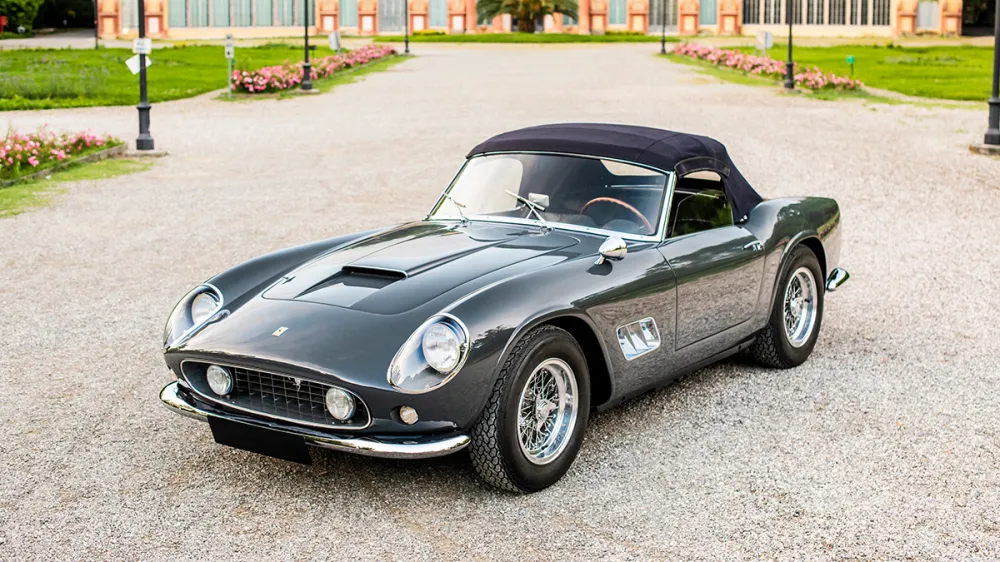
Just 56 examples of the 250 GT SWB California Spider would be built by Scaglietti during the three years it was in production. The first of those, chassis 1795 GT, is finished in a glossy coat of Grigio. The two-door had a red leather interior at Geneva but was returned to the factory and re-outfitted with black leather upholstery before being delivered to its original owner, British race car driver John Gordon Bennet. Six-and-a-half decades later the car looks identical to how it did when it left the factory the second time.
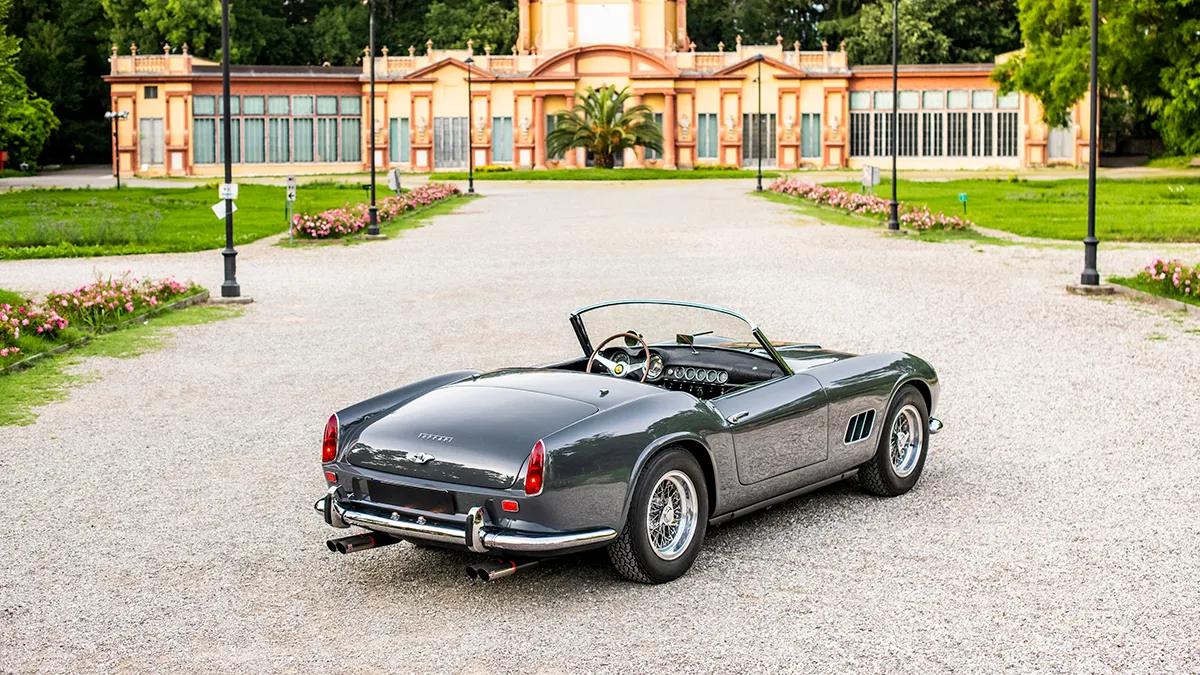
In addition to its original bodywork, the chassis 1795 GT features its original engine, gearbox, and rear axle. That mill is the competition-spec Tipo 168, a 3.0-litre V-12 that makes 196.1 kW. That may not sound like much by today’s standards, but, when you consider that the 250 GT SWB California Spider tips the scales around 952 kilograms, it’s more than enough.
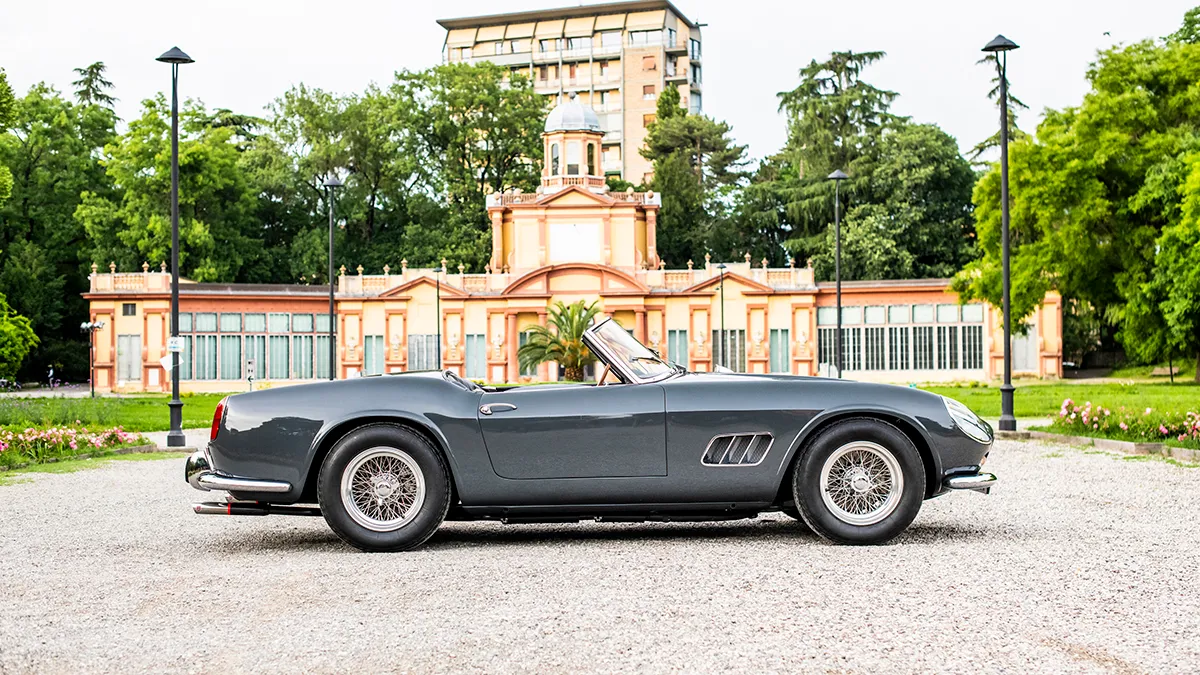
The first 250 GT SWB California Spider is scheduled to go up for bid during RM Sotheby’s annual Monterey Car Week auction, which runs from Thursday, August 15, to Saturday, August 17. Unsurprisingly, the house has quite high hopes for the car. The car carries an estimate of between $24 million and $26 million, which could make it one of the most expensive cars ever sold at auction.
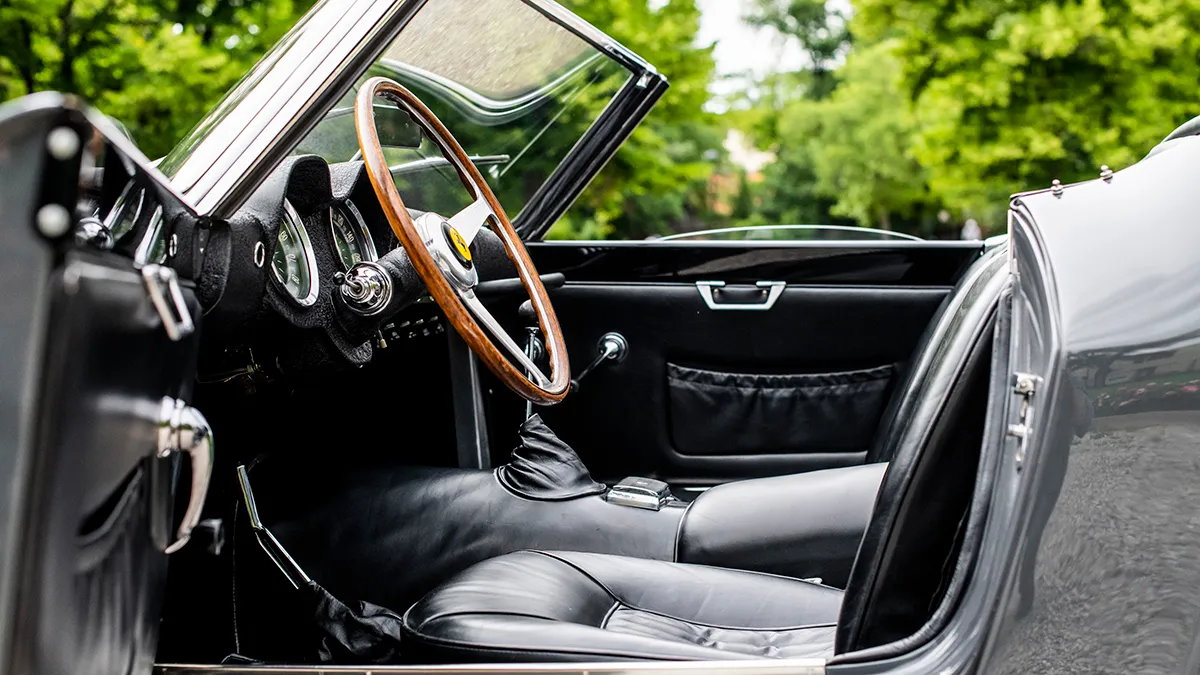
You may also like.
By Josh Bozin
24/07/2024






